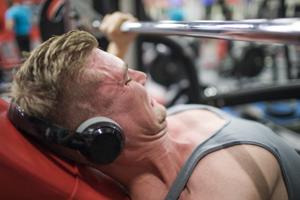Fitness enthusiasts seeking to enhance their chest workouts can now turn to proven strategies from a leading strength coach. These science-backed techniques are designed to accelerate muscle growth, offering individuals the opportunity to achieve quicker and more effective results.
According to the strength coach, the foundation of an effective chest workout lies in a combination of specific exercises, proper nutrition, and recovery techniques. These elements work together to optimize muscle growth and enhance overall performance. The coach emphasizes that understanding the science behind muscle development can significantly improve workout efficiency.
Key Techniques for Effective Chest Workouts
One of the standout recommendations includes incorporating a variety of movements targeting different areas of the chest. The coach suggests exercises such as the bench press, incline press, and chest fly, which collectively engage multiple muscle fibres. This varied approach helps to stimulate growth and prevent workout plateaus.
Additionally, the strength coach stresses the importance of progressive overload. This principle involves gradually increasing the weight or resistance level over time. By challenging the muscles consistently, individuals can enhance their strength and promote further growth.
In a recent interview, the coach stated, “The key to muscle development is not just lifting weights but ensuring that your body is constantly adapting to new challenges. This is where progressive overload becomes essential.”
Proper nutrition also plays a critical role in muscle growth. The coach advises individuals to focus on a diet rich in protein, which is vital for muscle repair and growth. Consuming lean meats, fish, dairy, and plant-based protein sources can provide the necessary nutrients to support an intense workout routine.
Recovery: A Crucial Component
Equally important is the aspect of recovery, which many individuals often overlook. The coach highlights that muscles need time to repair after rigorous training sessions. Adequate sleep and rest days are crucial for recovery, as they allow the body to rebuild muscle tissues and prevent injuries.
“Recovery is not an afterthought; it’s an essential part of the training process,” the coach added. “Without proper rest, you risk undermining your progress and can even lead to burnout.”
For those looking to implement these strategies, it is recommended to develop a structured workout plan that balances various exercises, nutritional intake, and recovery periods. This holistic approach is more likely to yield results, enhancing both strength and muscle size.
In conclusion, by integrating these science-backed strategies into their routines, fitness enthusiasts can work towards achieving their goals more effectively. The insights provided by the strength coach serve as a valuable resource for anyone eager to maximize their chest workout results.







